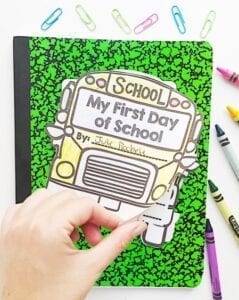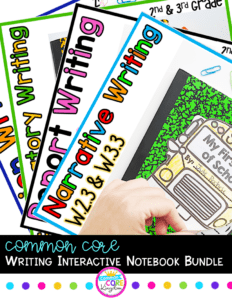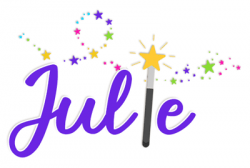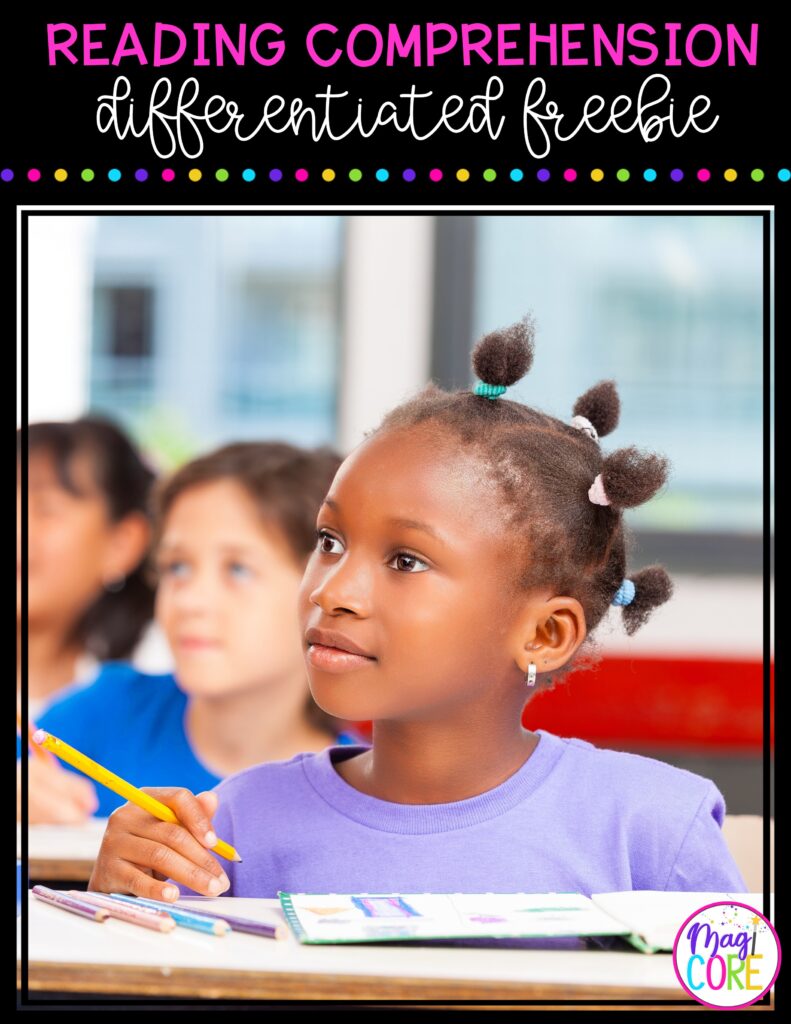Writing components now make up a large portion of the English and Language Arts section of many standardized tests. This is true even in the primary grades. Learning writing skills can be challenging and it is so important for students to remain engaged – but it can be difficult to find resources that focus on writing standards and keep students engaged at the same time. Here is a situation where the right resources can make all the difference. I liked to use interactive writing notebooks because they helped my students build comprehensive test prep skills while maintaining their enthusiasm and curiosity. There are so many ways to use writing interactive notebooks across multiple modes and genres of writing. Here are a few strategies that I found to be effective in my own classroom that I want to share with you. These strategies are focused toward second grade and third grade students but can be effective for other grades as well.
Common core writing standards W2.2 and W3.2 focus on explanatory or procedural writing. Use interactive notebooks to have your students explain how to do or create something. Teach your students transition words in connection with sequential or chronological order text structures. They’ll get a kick out of asking questions, finding their own “expertise” to write about, and brainstorming. Procedural writing is all about steps, so have your students use their interactive notebooks to visually represent how to make a sandwich, lemonade, pack a backpack, or build a sandcastle. Pictures will help them develop their explanatory text. The explanatory text interactive notebooks have everything you need to help your students learn to write procedural text.
Common Core Standards for ELA Writing W2.2 and 2.7 or W3.2 and W3.7 are vital to elementary students to become strong
readers and writers. Informational writing starts with reading about a topic and taking notes. Finding engaging topics can make a big difference. Try things that are important to your students or things they can relate to directly. These can range from topics about their town or state, ladybugs, planets in the solar system, interesting historical figures, and more. Organizing the information from a nonfiction text in a well-developed, organized essay can be fun when using informational writing interactive notebooks to put the work together. It’s all about building juicy paragraphs with main ideas and supporting details! Your students will love learning and showing what they know about informational texts that they read together and independently.
 Opinion Writing
Opinion WritingW2.1 or W3.1 covers opinion text. As the basis of persuasive writing and argumentative text for older grades, opinion writing is all about OREO! No, not the cookies! Your students will love the mnemonic device that will help them remember opinion, reason, example, and (restatement of) opinion (aka OREO). Brainstorming, planning, and writing an opinion essay in an opinion interactive notebook will your students stay organized and help them learn the important skill of effectively stating their opinion to get what they want and need!

Your second and third graders love to tell stories! Help them learn how to write them effectively and meet standards (W2.3 and W3.3.). Narrative writing also uses chronological order but has elements of plot and characterization. Use narrative interactive notebooks, and have your students share the stories about their first days of school, birthday, and more. Consider having your students present their stories to the class or sharing on an interactive app like Seesaw or ClassTag with parents. Use these in connection with simple narrative texts in your classroom. Then your students can see the elements of short story narratives in action!
 Here’s an Easy Way to Get Started
Here’s an Easy Way to Get StartedYour second and third graders are learning more about reading and writing while you are helping them meet standards. These writing interactive notebooks come with student lesson guides, rubrics, stationary, and mini books. Put the resources together in one or many notebooks to allow your students to explore different types of writing to grow as writers and meet their writing standards.
Already gave these a try? I’d love to hear from you. Leave a comment below to let me know how it went!

We strive to create resources that empower teachers and transform student success. We create skill-focused resources that promote critical thinking, enhance student engagement, and incorporate diversity. Our goal is to develop the tools teachers need to reach their students and foster a lifetime of learning.

